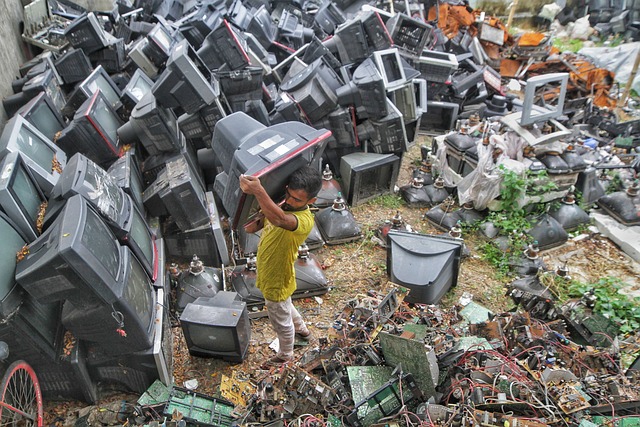In the equation of sustainability, waste reduction holds a pivotal, often underestimated, position. Underestimated because waste is more than discarded material; it is the visible residue of inefficiency, oversight, and underutilized potential across production cycles. As industries face the realities of finite resources, stringent regulations, and shifting consumer expectations, waste has evolved into a metric that reflects not just environmental performance but organizational discipline and foresight. Waste is the blunt metric that tests the integrity of corporate sustainability promises, translating them into quantifiable reductions and avoided impacts. This article examines the role of waste reduction metrics in a rapidly industrializing and resource-finite world, where accountability lies not only in goals but in the rigors of tracking and reporting every kilogram, every megabyte, and every ton diverted from the landfill.
Sustainability Metrics Explained
Sustainability metrics represent a comprehensive, data-centric examination of an organization’s environmental impact. Each metric, whether focused on emissions, water consumption, or waste production, captures specific, often hidden, dimensions of resource use and inefficiency. However, the goal is not merely to “track” performance but to quantify the environmental and operational costs associated with production, distribution, and waste disposal, translating abstract sustainability goals into grounded, measurable outcomes.
Key Categories of Sustainability Metrics
Environmental metrics are categorized to cover the breadth of industrial impact across several domains. Each category tells a specific story about resource usage and its implications:
- Energy Consumption: Tracks both direct and indirect energy used across production and distribution channels. This metric is often subdivided by energy source, including renewable versus non-renewable usage, to assess overall energy efficiency.
- Water Usage: Quantifies the total water footprint, which is especially pertinent for industries in water-scarce regions or sectors with high water demands, such as agriculture and manufacturing. Water metrics can further extend into wastewater generated and water recycling rates.
- Greenhouse Gas Emissions: Captures carbon and other greenhouse gases, broken down by Scope 1, 2, and sometimes Scope 3 emissions, allowing industries to understand the full extent of their contributions to climate change.
- Waste Production: This encompasses both quantity and types of waste, from landfill-bound waste to materials that can be composted, recycled, or reused. Waste metrics, as data points, demand granular classification, providing a complete view of waste composition and disposal pathways.
Why Waste Reduction Metrics Are Central to Sustainability
Waste reduction metrics have a dual function—they serve as both environmental and operational indicators. When captured with precision, waste data unveils inefficiencies hidden deep within supply chains, shedding light on wasted materials, redundant production cycles, or the inadequate handling of resources. This makes waste metrics indispensable in measuring the gap between resource inputs and outputs, enabling businesses to adjust workflows and implement waste minimization strategies grounded in empirical data.
Types of Waste
- Solid Waste: The most visible and common form, encompassing general refuse, packaging, and by-products.
- Hazardous Waste: Toxic materials with environmental and health hazards, including solvents, chemicals, and heavy metals.
- Electronic Waste (E-Waste): A rapidly growing category in the technology sector, e-waste includes discarded electronic devices that contain hazardous components.
- Food Waste: Prevalent in retail and hospitality, it includes spoiled, excess, and unsellable food products.
Core Metrics in Waste Reduction
- Total Waste Generated: A measurement that aggregates all waste produced, forming a benchmark for future reductions.
- Waste Diverted from Landfill: Calculated as the percentage of waste diverted from landfills toward recycling, composting, or energy recovery.
- Recycling Rates: The ratio of recycled waste to total waste, capturing the extent of circularity within operations.
- Waste Intensity: Measures waste generated per unit of production(e.g., per product or per revenue dollar), revealing efficiency in relation to output volume.
Metric Calculation Methods
Accurate metrics require standardized methods for precise measurement and comparison. For instance:
- Total Waste Generated:
Sum of all waste by type (e.g., hazardous, solid, e-waste) over a specified period. - Waste Diverted from Landfill: (Total Diverted Waste/Total Waste Generated) ×100
This shows the efficiency of diversion practices. - Recycling Rate:
(Total Recycled Waste/Total Waste Generated) ×100
Thisan indicator of how much material is reintegrated into production cycles.
- Waste Intensity:
Total Waste Generated/Total Production Output
This calculation provides a ratio that accounts for both production levels and waste output.
Tracking Waste Reduction Across Industries
Manufacturing Waste
In manufacturing, waste spans material scraps, packaging, and by-products from operations. In the U.S., industrial solid waste generation and disposal are extensive, with about 7.6 billion tons processed annually across various industrial facilities. Tracking metrics such as recycling rates for production materials or waste intensity within product cycles enables manufacturers to identify inefficiencies at every stage. Strategies vary, from lean manufacturing techniques that focus on reducing material use to closed-loop systems that reclaim production waste.
Retail Waste
Retail waste is heavily influenced by packaging materials and excess inventory. Containers and packaging constitute a substantial portion of municipal solid waste, amounting to about 2 million tons annually. Metrics within this sector increasingly focus on both packaging waste and unsold goods, each directly impacting waste reduction strategies. Many retailers are now examining waste across the full product lifecycle, incorporating metrics on returns, disposals, and the environmental costs of overstock.
Food Waste
Effectively managing food waste is another area of pressing concern, Especially, considering that, on average, each year, up to 40% of food produced in the US is ultimately wasted. Metrics such as spoilage rates, waste per unit of production, and landfill diversion rates provide visibility into where waste occurs within the supply chain. Through waste audits and food tracking technologies, companies can methodically address spoilage, surplus, and disposal rates, aligning their operations with data-driven waste reduction goals.
E-Waste
E-waste presents a major challenge due to its hazardous components and complex recycling needs. Each year, around 6.9 million tons of e-waste are generated in the U.S. alone. Globally, estimates from the World Economic Forum predict that e-waste will reach 81.6 million tons annually by 2030.Metrics for e-waste focus on recycling rates and landfill diversion, often paired with take-back programs that recover devices at the end of their lifecycle.
Construction Waste
The construction industry deals with high volumes of demolition and construction debris, generating about 600 million tons of waste each year in the United States alone including concrete, metal, and wood. Metrics such as recycling rates for materials or landfill diversion percentages help measure the effectiveness of waste reduction initiatives. Some companies are turning to deconstruction, a process that salvages materials from demolished sites for reuse, applying waste metrics to assess the circularity of their projects.
Reporting Waste Reduction
Frameworks for Standardized Reporting
Clear standards are essential for reliable waste reporting, and several established frameworks enable companies to report waste data systematically and accurately.
- Global Reporting Initiative (GRI):
Recognized as one of the most comprehensive frameworks, GRI provides detailed guidance on a variety of sustainability issues, including waste management. It encourages companies to disclose waste metrics, such as generation, recycling, and hazardous waste, tailored to sector-specific demands, which makes it adaptable yet rigorous across industries. - Sustainability Accounting Standards Board (SASB):
SASB standards emphasize sector-specific metrics, which emphasized the waste challenges unique to each industry. For instance, SASB guidelines differentiate waste metrics based on whether they apply to manufacturing, healthcare, or technology, enabling companies to focus on waste types and reduction strategies most relevant to their field. - Carbon Disclosure Project (CDP):
Although originally centred on carbon emissions, CDP has expanded to include waste metrics in its environmental disclosure framework. CDP’s integrated reporting approach captures waste as part of a broader environmental impact assessment, especially for companies with high levels of industrial or hazardous waste, enhancing the transparency of environmental risks across the supply chain.
Integrating Waste Data into Sustainability Reports
Reports should present waste metrics with precise year-over-year comparisons, demonstrating trends in reductions, material efficiencies, and diversion rates. Detailed breakdowns—by type, volume, or disposal method—give dimension to raw data, linking specific waste streams to underlying operational changes. Benchmarking against industry standards or voluntary reporting frameworks such as GRI or SASB adds comparative depth, situating performance within sector norms and global expectations. Visual tools like multi-year trajectories or waste-to-production ratios enhance readability and clarity, translating complex waste management data into an accessible narrative that supports strategic decisions.
Regulatory Requirements and Compliance
As many will already be familiar, regulations vary widely, reflecting a patchwork of policies shaped by environmental concerns, economic interests, and regional resource constraints. In the European Union, the Waste Framework Directive mandates that businesses follow strict waste categorization and reporting standards, integrating both hazardous and non-hazardous waste data into national environmental strategies.
Many countries, including those with federal systems such as the United States, operate under a mix of state and national laws, where certain states impose more rigorous landfill diversion targets, recycling mandates, and e-waste regulations than others. Increasingly, organizations are subject to reporting standards that emphasize extended producer responsibility, a principle requiring companies to account for the lifecycle impact of their products, from material sourcing to post-consumer disposal. Noncompliance can carry financial penalties, but the complexities of these requirements often mean that adherence extends beyond simple data collection, necessitating integrated tracking systems that can produce standardized reports across jurisdictions.
The Importance of Transparency and Accountability in Waste Reporting
Transparency is often seen as an accountability measure, and here, it should aim to reflect the rigor and responsibility with which organizations manage waste, particularly since stakeholders—ranging from investors to customers—demand detailed, verifiable data on waste reduction. When companies disclose waste metrics accurately and truthfully, they enable stakeholders to evaluate sustainability commitments objectively, building credibility. On the internal side, this also allows for performance tracking, ensuring that waste reduction initiatives are measured and refined over time.
Best Practices for Effective Waste Tracking and Reporting
- Set Explicit Targets: Waste reduction goals should be specific, measurable, and reviewed consistently.
- Adopt Digital Waste Management Tools: Real-time tracking systems improve data precision and reporting efficiency.
- Continuous Waste Audits: Regular audits identify waste sources and evaluate progress against reduction targets.
- Stakeholder Collaboration: Engage with suppliers and partners to streamline waste management across the supply chain.
- Employee Training: Equip teams with the knowledge to follow waste reduction practices meticulously.
Conclusion
As we can see, waste reduction metrics provide a straightforward but powerful framework for assessing real progress in sustainability. They capture the tangible outcomes of environmental efforts, holding companies to measurable standards rather than abstract ideals. Each metric becomes part of a larger, data-driven narrative where sustainability is a continuous, quantifiable process, making clear where waste is minimized and where more precise efforts are still required.







